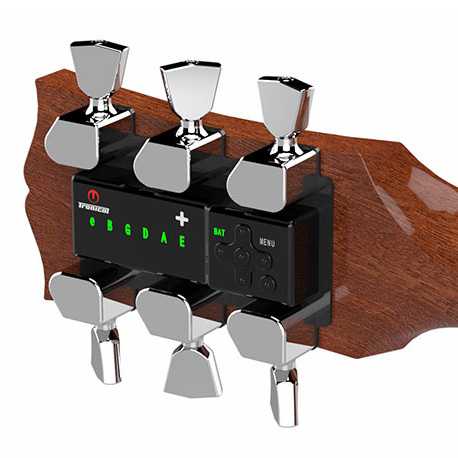Guitar tuning
Exploring the World of Guitar Tunings: A Comprehensive Guide
Introduction
Guitar tuning is not limited to the standard EADGBE configuration. In fact, there’s a vast array of alternate tunings that open up new sonic possibilities and inspire creativity. From open tunings favored by blues and slide guitarists to exotic tunings used in experimental music, each tuning offers its own unique character and expressive potential. In this guide, we’ll explore some of the most popular and intriguing guitar tunings, delving into their origins, applications, and notable examples in music.
Standard Tuning (EADGBE)
Let’s start with the most common tuning: standard tuning. In standard tuning, the strings are tuned to the pitches E, A, D, G, B, and E, from low to high. This tuning provides a balanced and versatile foundation for playing a wide range of musical styles, from rock and pop to jazz and folk. Its familiarity and consistency make it an ideal starting point for beginners and a reliable choice for many guitarists.

Open Tunings
Open tunings involve tuning the guitar strings to form a chord when played open, without fretting any notes. These tunings are particularly popular among slide guitarists and blues musicians for their rich, resonant sound and ease of playing chords. Some common open tunings include Open D (DADF#AD), Open G (DGDGBD), and Open E (EBEG#BE). Open tunings allow for expressive slide techniques and unique chord voicings, making them a staple of slide guitar playing and acoustic blues music.
Drop Tunings
Drop tunings involve lowering one or more strings from their standard pitch to achieve a heavier, darker sound. One of the most popular drop tunings is Drop D (DADGBE), where the low E string is tuned down a whole step to D. Drop D tuning is widely used in rock and metal music for its deep, powerful tone and ease of playing heavy riffs and power chords. Other drop tunings, such as Drop C (CGCFAD) and Drop B (B F# B E G# C#), are also favored by metal and alternative rock guitarists for their extended range and aggressive sound.
DADGAD Tuning
DADGAD tuning is a versatile and atmospheric tuning commonly used in folk, Celtic, and fingerstyle guitar music. In DADGAD tuning, the guitar strings are tuned to the pitches D, A, D, G, A, and D, from low to high. This tuning produces a rich, open sound with lush, drone-like qualities, making it ideal for playing modal melodies, intricate fingerstyle patterns, and ethereal chord progressions. DADGAD tuning has been popularized by artists such as Pierre Bensusan, Davy Graham, and Jimmy Page.
Alternative and Experimental Tunings
Beyond the realm of traditional tunings, there exists a world of alternative Guitar tuning and experimental tunings that push the boundaries of conventional guitar playing. These tunings can vary widely in their configurations and applications, from microtonal scales and prepared guitar techniques to custom tunings designed for specific compositions or sonic explorations. Artists like Sonic Youth, Joni Mitchell, and Robert Fripp have embraced alternative tunings as a means of expanding their sonic palette and challenging conventional notions of guitar music.

Nashville Guitar tuning:
Nashville tuning, also known as high-strung or octave tuning, involves replacing the lower four strings of the guitar with lighter gauge strings tuned one octave higher than standard pitch. The resulting tuning is similar to standard tuning but produces a shimmering, bell-like quality with enhanced treble and clarity. Nashville tuning is commonly used to add sparkle and definition to acoustic guitar tracks in recording sessions, creating a lush, chimey sound that complements other instruments Guitar tuning in the mix.
Open D Minor Tuning
Open D minor tuning is a variation of open D tuning (DADF#AD) where the sixth string is tuned down a whole step to D, resulting in the tuning DADFAD. This tuning produces a haunting, minor-key sound that’s well-suited for playing blues, folk, and fingerstyle compositions with a melancholic or introspective mood. Open D minor tuning lends itself to emotive slide guitar playing, expressive chord voicings, and soulful melodies that evoke a sense of longing or introspection.
Double Drop D Tuning
Double Drop D tuning is a variation of drop D tuning where both the low E and high E strings are tuned down a whole step to D, resulting in the tuning DADGBD. This tuning provides an extended low range while retaining the ease of playing power chords and heavy riffs associated with drop D tuning. Double Drop D tuning is favored by guitarists who seek a balance between low-end punch and melodic flexibility, making it a popular choice in rock, metal, and alternative music genres.
Conclusion Guitar tuning
Exploring different guitar tunings opens up a world of sonic possibilities and creative inspiration for guitarists of all levels and styles. Whether you’re drawn to the Guitar tuning bluesy resonance of open tunings, the heavy crunch of drop tunings, or the atmospheric textures of alternative tunings, there’s a vast array of options to suit your musical preferences and aspirations. By experimenting with different tunings and incorporating them into your playing, you’ll discover new sounds, techniques, and musical expressions that will enrich your journey as a guitarist.




